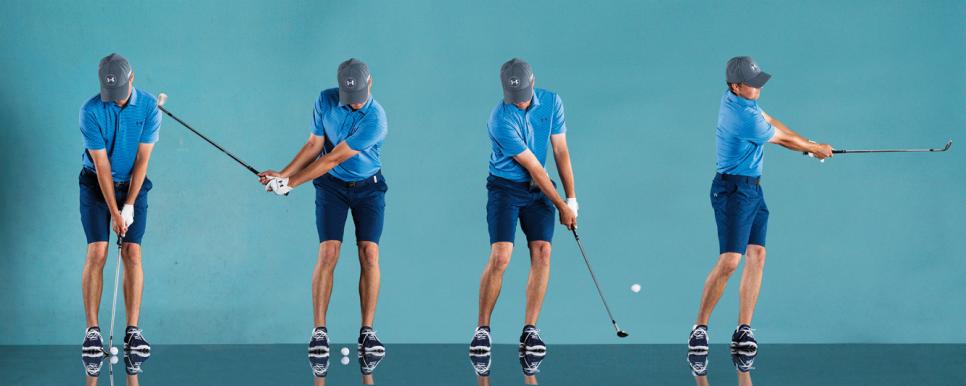I know what you're thinking: When I say "be the boss of your ball," you figure I want you to yell at it the way I sometimes do in tournaments. Jokes aside, that's not what I'm talking about. Being the boss means getting the ball to do what you want it to do. Like floating in the air and landing softly, or banking off a mound and rolling out like a putt, or taking a couple of hops and checking up stone dead next to the flag. And once you're on the green, it's about tracking to the hole with the right blend of speed and break. If you can control the ball in these situations, you're going to shoot lower scores. Here are a few of my short-game secrets. We'll put that ball to work for you.

FLOAT IT
To save my par from right of the 18th green on Saturday at the Masters, I needed to loft the ball high and land it with very little rollout. When I want to float the ball in the air like that, I set up in a wide stance and play it about middle. I lay the club wide open, meaning the face of my 60-degree wedge points straight up. The wider stance keeps me stable so I can make an aggressive swing. That helps get the ball up.

The open face adds loft, too, provided I can maintain that loft through impact. How I do that is the secret to pulling off this shot. I use a little hand-and-wrist action just as the club is getting to the ball. It happens in a flash, but what I'm trying to do is slide the clubface under the ball a split second before my hands pass over it. This ensures that the extra loft you start with at address is still there at impact. Get it right, and the ball comes off high and soft. A word of caution: This is a real finesse play, so you'll have to practice it before you can start hitting it on command.
BUMP IT
Another way to add some finesse around the green is to bump your ball into a hill and use the slope to kill the speed. This works well if you're short-sided and the flag is too close to the edge of the green to risk a high shot. To bump the ball, I play it close to my back foot and use a lower-lofted wedge, like my 52 (below). These adjustments keep the ball down. I also favor my front foot: I'd say my weight is 70 percent left during the swing.
The key to bumping the ball is to strike it before the club hits the ground. You can get away with hitting a little behind the ball if you're trying to flop it, but you need solid contact here. You want to feel like you're driving the clubhead down at impact. Combine that with the ball being back and your weight forward, and the shot will squirt out low, lose some heat on the hill and roll up to that tucked pin.
CHECK IT
The coolest way to control your ball is to fly it in low and get it to grab after a couple of bounces. I use this technique when I have a lot of green to work with. I take my 60-degree wedge, open the face slightly at address, and set the ball about middle in my stance to make sure I catch it clean (above). Going back, I hinge my wrists, then try to maintain a little of that hinge coming down. My hands should be a touch closer to the target than my clubhead at impact.
Here's a trick to put the brakes on the ball: Keep the clubhead close to the ground for as long as you can after the strike—that gives the grooves a chance to really grip the ball and create backspin. If you swing up too soon, you'll either hit the shot too high or make poor contact. To spin it, you need speed and a crisp strike, so turn your body through to face the target.
HOLE IT
Hopefully you got the ball to do what you wanted on the chip or pitch, so all that's left is a tap-in. But if you still have work to do, here's what you need to remember: You can't determine how much a putt will break until you figure out how hard you're going to hit it. That might sound obvious, but I see a ton of putts come up short because the golfer paid too much attention to the slope of the green and not enough to the speed.

On breaking putts, walk along the low side of the line and try to figure out the speed first. When you get over the ball, take a few extra looks down the line to lock in your distance.
Picture the path the ball will need to take at that speed, and pick a spot about midway between you and the hole on that path—like a blemish on the green. With good speed, a ball that rolls over that spot will funnel right into the cup.


